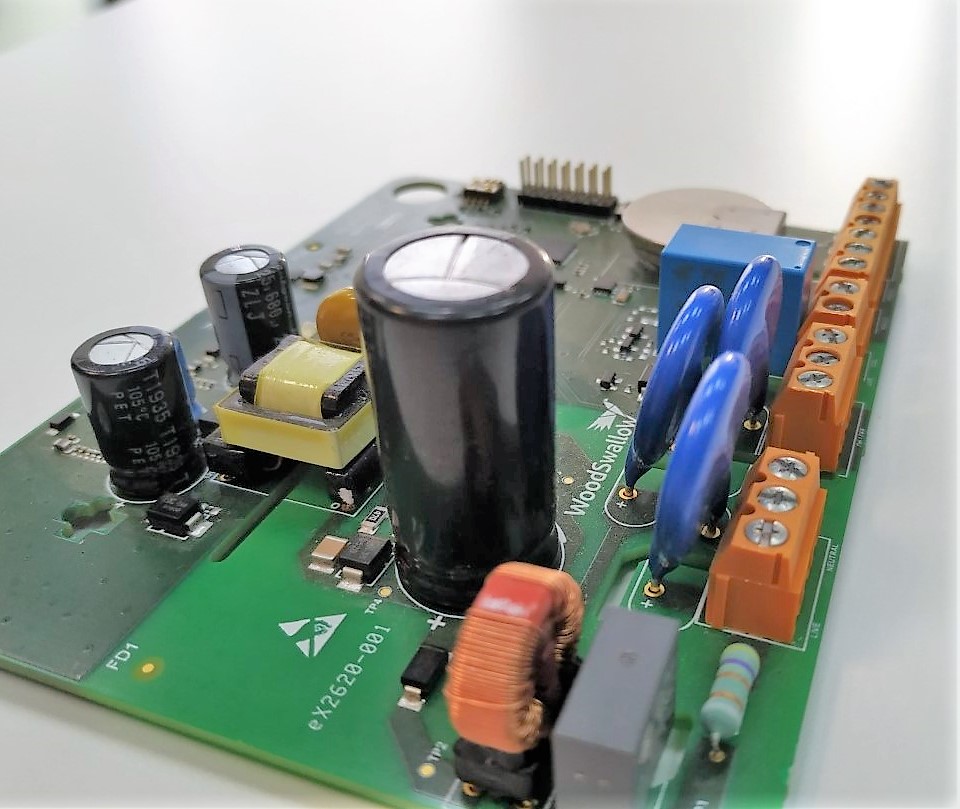
In this post we will explain, in general terms, what are embedded systems and what their particularities are. In addition, we will name some cases of use and practical applications of these systems. There are currently more than 10,000 million embedded devices deployed around the world and counting.
What is an embedded system?
By definition, an embedded system is a computing system that is based on a microprocessor or microcontroller and that is specifically designed to perform one, or a few, dedicated functions. In other words, they are designed to cover very specific needs. For example, a vehicle brake system, a GPS system, a router, or a printer are embedded systems.
Precisely, the fact that they are designed to fulfill a specific objective or function is the main difference between an embedded system and another computer designed to perform many different types of tasks, such as a PC.
Another particularity of embedded systems is that almost all their components are integrated into the motherboard. The usual components that they include are microprocessor (this element replaces the core of the computer, or CPU in embedded systems), microcontroller (a dedicated computer with limited capacity, small size, and light), memory, DSP, micro-with specific architecture in function of necessity -, and diverse peripherals that allow to execute the specific tasks for which the solution has been designed.
Design of embedded systems
The design of this type of computer is very versatile. Designers can adapt it according to the needs of the product. For example, the processor can be more or less powerful depending on the need. The RAM memory will also be adapted, etc.
When we talk about embedded systems, the software that controls the hardware device is known as Firmware. Programming can be done either directly in the microcontroller or microprocessor assembly language, or in other languages such as C, C++ or JAVA using specific compilers. Although we must say that the most common is to program in C. Today there are few cases of programming directly in assembly language.
Regarding communication, in most cases the system will communicate wirelessly. Wired communications also exist, but they are falling into disuse for this type of device. The connectivity capability takes embedded design to a new stage known as IoT (Internet of Things).
Basically, almost any device with a specific functionality will be able to be connected to the network in the next few years. For this, it is necessary to provide the equipment with hardware that allows this connection. There are multiple protocols and technologies to interconnect devices such as Zigbee, LoRa or Sigfox. More recently, embedded systems with adapted cellular technology such as NB IoT or LTEM are beginning to spread.
Embedded systems peculiarities
Embedded systems are so customizable that they can be adapted to fulfill many functions in all types of environments.
In addition, in its design it is usual for economy to prevail. Designers save as much as possible on space, weight, capacity, memory, power consumption, and of course price. A quality embedded system is one that fulfills the function for which it was conceived in the simplest, most efficient, and economical way possible.
Reliability is another fundamental requirement of embedded systems. This is because it is common to find computing systems in real time. Furthermore, in many cases they work autonomously and continuously.
Another feature that makes them so useful is that they can be connected very easily to a computer and coupled with other devices, which allows remote monitoring and tracking of activity. At this point another key factor comes into play, that of security to protect the information that the systems collect, issue, and receive.
Embedded software and hardware designers work with significant code size and memory space limitations. For this reason, designing embedded systems is a challenge in which ingenuity and creativity when seeking solutions to these problems are essential.
Practical applications of embedded systems
We can find embedded systems in almost any industry you can think of. There are embedded systems designed for transport, industrial, telecommunications, energy, health, banking, defense, and much more.
This diversity of practical applications is possible because an embedded device can be adapted to product requirements in a way that is customized to perform a specific task. Clear examples could be the following: the same controller with wireless communications could be used to monitor the hydric stress of a fruit tree plantation, for example, integrating a volumetric sensor that allows knowing if the land contains adequate water for the growth of the plants.
At the same time, that device could be used in a totally different situation if we use another sensor connected to the same port as the volumetric sensor. A simple example would be a pollution sensor that allows control of contaminant levels in a city.
These examples denote the power of embedded development and the almost infinite number of possible applications. Same product, same interface, different sensor, but different application: one in an urban environment and another in a rural environment.
In the case of WoodSwallow we have a large team of embedded system hardware and software developers. We design, develop, and test any type of embedded system, our specialty being electricity, gas, or water meters. In addition, we have experience in the design and development of domestic chargers for electric vehicles.
Whether you are looking for a complete turnkey solution or if you want help in a specific phase of product development, our team of engineers can help you. Contact us!






